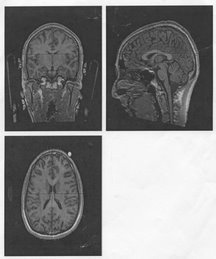Equally interesting is the observation of how we react to the emotional stress of ending or changing relationships with those we value--by running into retreat mode. For me it’s been hyper focusing on school extracurricular---Montclair clinic, Trends in Autism conference, and cramming for Neuro – anything but emotions and the future, only immediate survival. For others it has been an escape home away from the “drama” of campus, and for the third, it has been to hide literally, from his soon to be ex in order to study. I am sitting here learning about the catecholamine drugs--- Fight or flight response –and the impact these neurotransmitters have throughout the body. It is hard to believe that it is as simple as neurotransmitter soup that has made the last few days (and coming weekend) such a challenge. One amazing attribute is the brains ability to override its most basic reflexes— including pain. One of the first tenets we learn in Neuroscience is that pain is a perception of nociception from the pain receptors of the body. You can have the nociceptive response without the pain – we’ve all heard horrific accounts from war heroes who continue without pain-despite mortal wounds, or tales of professional athletes who perform despite broken or sprained extremities. The alternative process—pain without nociception is all too common—chronic pain which can be equally debilitating. In light of that…neglecting emotional distress is probably as pathologic as chronic pain but today feels as necessary as retreating from the heat of battle despite injury that might otherwise redirect all attention.
Homeostasis—the process of being in balance is controlled by parasympathetic’s predominance in the balance of life. This “feed and breed” pathway sets the tone while the "fight or flight" provides reserves when we are threatened and need to escape. It’s amazing that we have a system that can persist by the very fact of forcing you out of balance. It’s equally amazing how any alteration in our proverbial “feeding and breeding” desires automatically throws us into the turmoil of fight or flight, as if we were being attached by a lion, despite the fact it involves those we love.
This semester has emphasized two very important facts --- Exams are NOT LIONS that require a full blown sympathetic response; neither are friends, girlfriends, and family. As med school consumes my life in the process of molding me into a future physician I need to discover ways to remain in homeostasis with my body and my surroundings –not in attack mode. Until then, I hope the adrenaline lasts until spring break when I hope to experience true catharsis.

"...because you can't fight a bear when you're urinating[from the caption]."
Image from Dr. Wong's Introduction to Autonomic Pharmacology lecture 3/10/08.

No comments:
Post a Comment